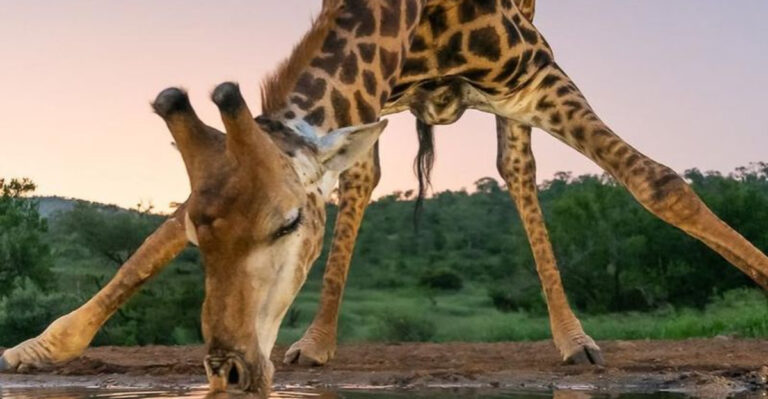Perfectly Preserved Ice Age Bison Recently Discovered Stuns Paleontologists Worldwide
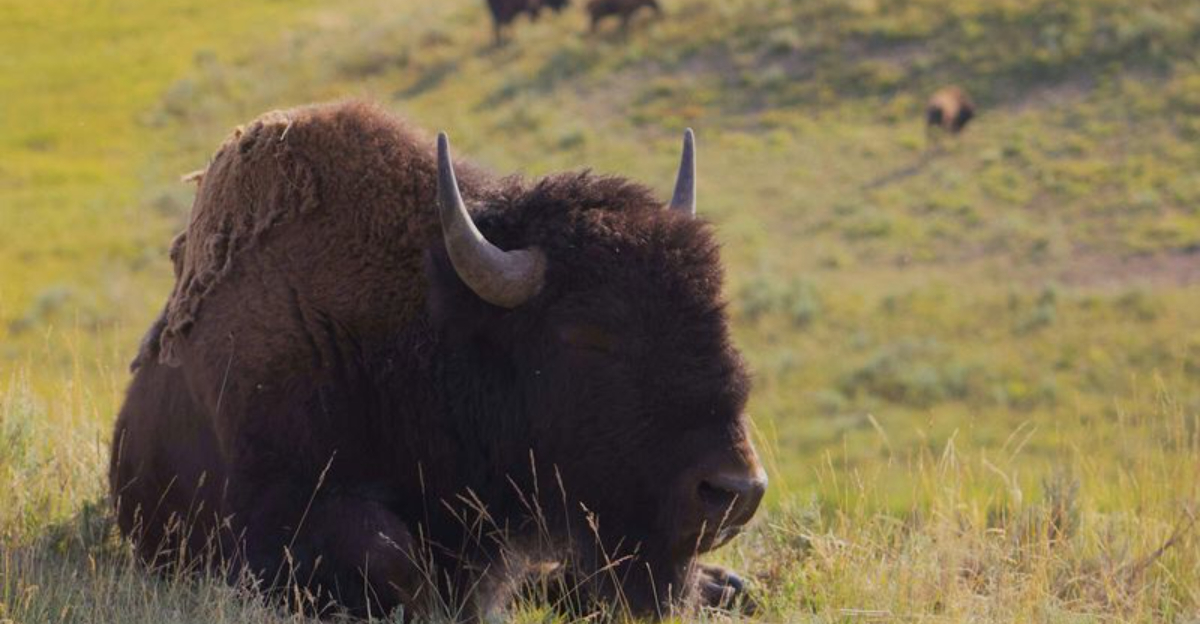
Imagine stumbling upon a creature from a time long-lost to history.
That’s exactly what happened when paleontologists discovered a perfectly preserved Ice Age bison, leaving experts and enthusiasts around the world in awe.
This remarkable find offers a unique window into the past, capturing the imagination of those fascinated by ancient life.
Here are 13 captivating facts about this stunning discovery that you won’t want to miss, each offering a glimpse into a world frozen in time.
1. Frozen In Time
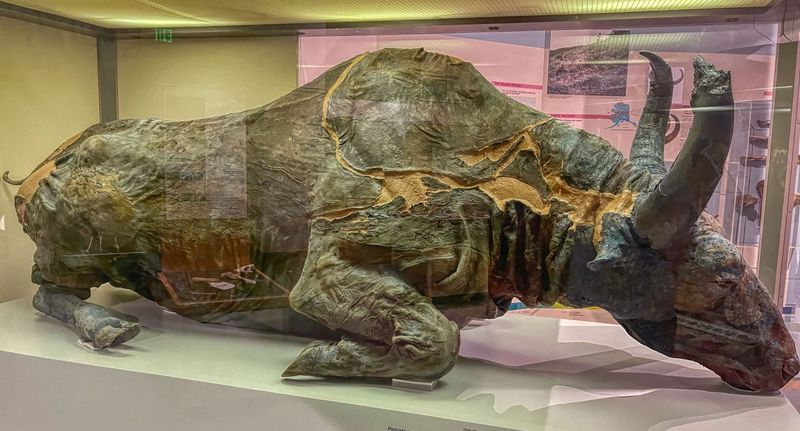
The perfectly preserved Ice Age bison was found encased in Siberian permafrost. Its fur, skin, and even some internal organs remain intact.
This discovery is remarkable because the bison’s features provide a vivid snapshot of what life was like thousands of years ago. Scientists can examine these details to gain insights into the bison’s diet, health, and environment.
The frozen state of the bison allowed it to bypass decomposition, preserving it for millennia. It’s as though this majestic creature was gently laid to rest, untouched by time.
2. A Window To The Past
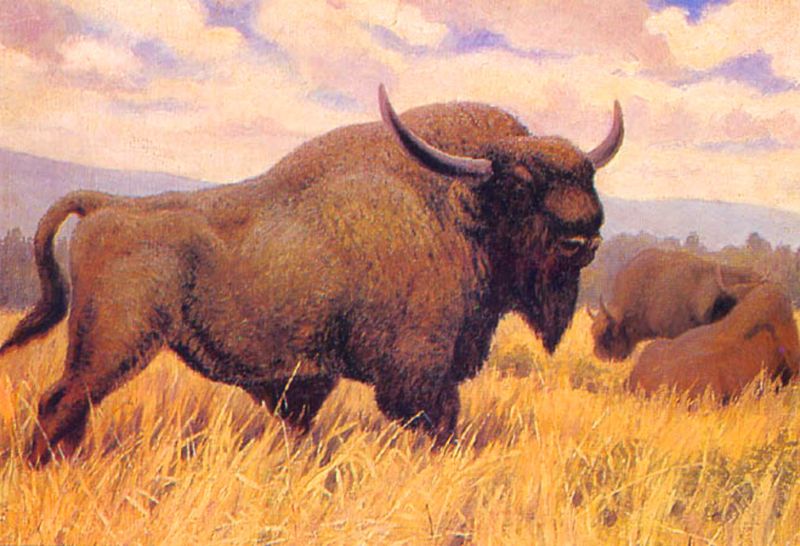
Paleontologists are thrilled with the discovery of the Ice Age bison because it serves as a window to the past.
This particular bison lived during the Late Pleistocene, offering a glimpse into an era when massive mammals roamed the Earth.
By studying the bison’s remains, researchers unlock secrets of ancient ecosystems and climates. This rare find helps scientists compare ancient species with their modern descendants.
It’s a chance to travel back in time through the lens of science, piecing together stories from an era long gone.
3. Impeccably Preserved Fur
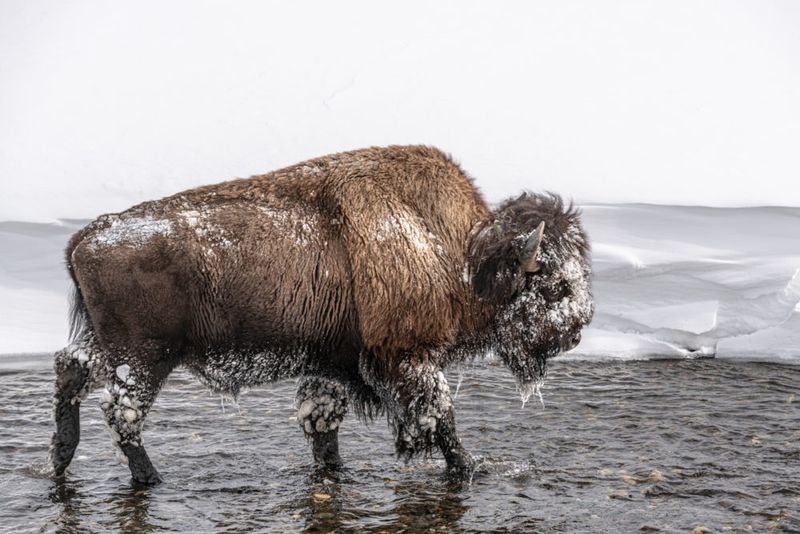
The fur of this Ice Age bison is impeccably preserved, offering a unique opportunity for study. Its thick coat, adapted for frigid climates, provides clues about its survival strategies.
The fur’s texture and color are a testament to the environmental conditions of the Ice Age. Scientists are eager to analyze the fur to understand more about the bison’s lifestyle.
This discovery highlights the resilience of nature, capturing the essence of a world that was both harsh and beautiful. A glimpse of its fur is like touching history itself.
4. Diet Detective Work
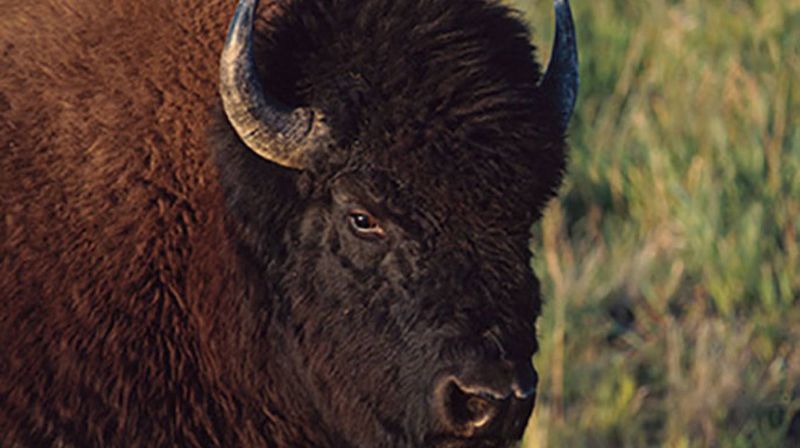
Delving into the bison’s stomach contents reveals a diet detective’s dream. Scientists can examine remnants of its last meals, consisting of grasses and herbs native to the Ice Age.
This information helps reconstruct the bison’s habitat and feeding habits. By understanding what the bison ate, researchers can infer the types of vegetation that thrived during its time.
This detective work paints a broader picture of the Ice Age ecosystem, where the bison was both a grazer and a crucial part of the food chain.
5. The Art Of Adaptation
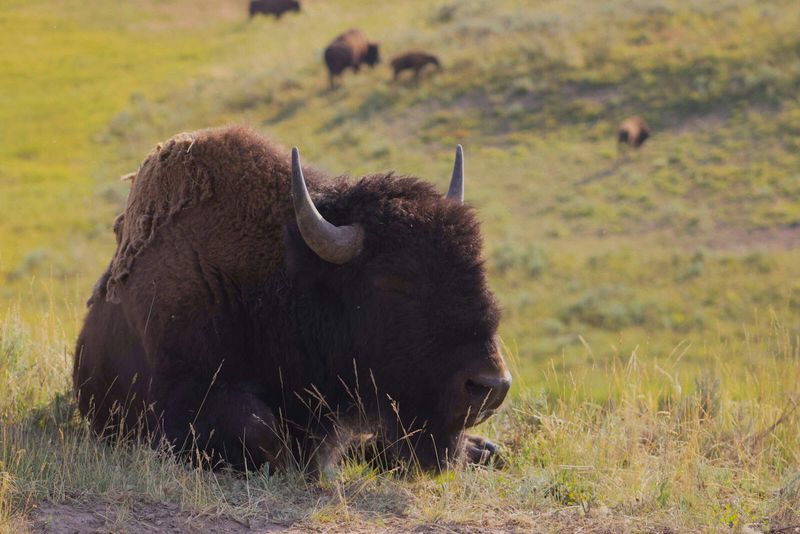
The Ice Age bison was a master of adaptation, surviving in some of Earth’s harshest conditions. Its robust build and thick fur were essential for enduring icy winds and frigid temperatures.
Adaptations extended to its social behavior, with herding providing safety in numbers. This art of survival showcases nature’s ability to equip species to thrive in challenging environments.
The bison’s story of adaptation is a testament to the resilience required to navigate a world full of predators and scarce resources.
6. A Global Sensation
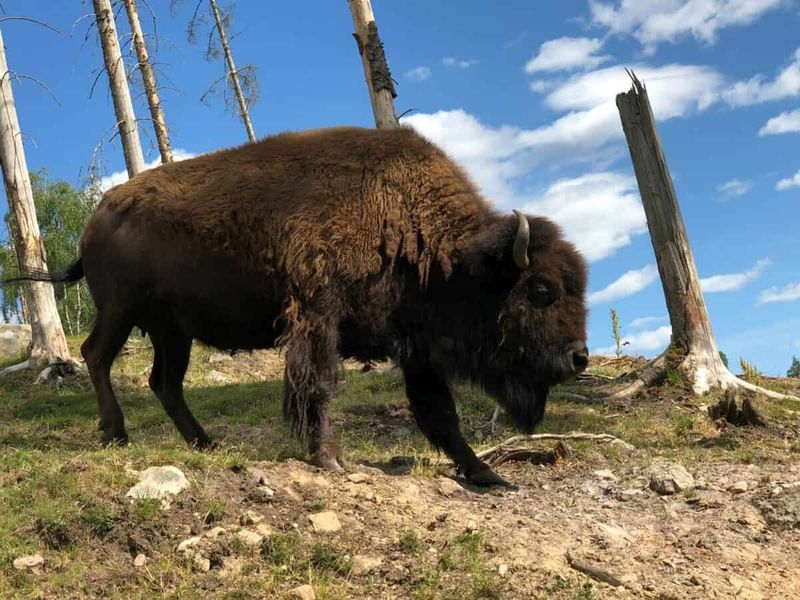
The discovery of the Ice Age bison has become a global sensation, captivating both scientists and the public.
News outlets worldwide have covered the story, sparking curiosity and excitement. Social media platforms buzz with discussions, as people marvel at this glimpse into the past.
The bison has become a symbol of the wonders hidden beneath the Earth’s surface, waiting to be uncovered. This global interest underscores the human fascination with ancient life and the mysteries it holds.
7. DNA Secrets Unlocked

The potential to extract DNA from the Ice Age bison opens new doors to understanding its genetic makeup.
Scientists can compare its genetic code with that of modern bison, exploring evolutionary changes over thousands of years.
This genetic research enhances our understanding of how species adapt to changing environments. It’s like reading a biological diary, revealing the bison’s lineage and relationships with other species.
The secrets hidden in its DNA offer a profound connection to the past, one strand at a time.
8. Cultural Connections
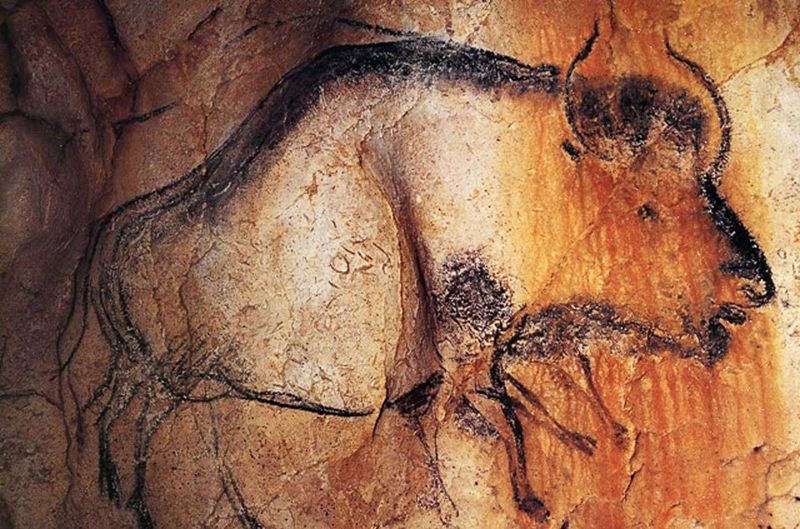
The Ice Age bison holds cultural significance, as evidenced by its depiction in ancient cave paintings.
These paintings highlight the bison’s importance to early humans, either as a source of sustenance or as a revered animal.
Such artwork provides a glimpse into the relationship between humans and megafauna during the Ice Age.
This cultural connection emphasizes the bison’s role in human history, bridging the gap between past and present. The artistry of ancient humans captures the spirit of coexistence in a shared world.
9. Preservation Through Cold
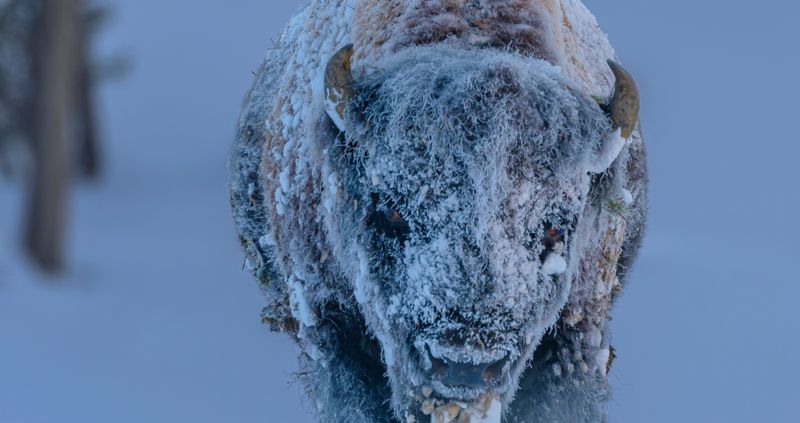
The preservation of the Ice Age bison is a testament to the power of cold environments. Frozen conditions halted decomposition, allowing the bison to remain intact for thousands of years.
This natural preservation process offers an unparalleled look at the past. It’s as if the bison was paused in time, waiting for discovery.
By studying this preserved state, scientists can learn how cold climates impact organic materials. The bison’s long slumber is a reminder of the intricate dance between life and the elements.
10. Paleontological Puzzle Piece
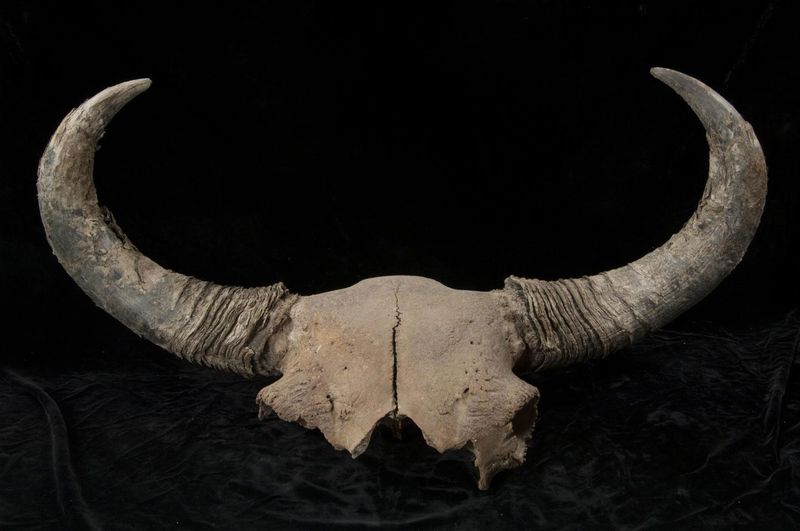
The Ice Age bison is an important piece of the paleontological puzzle, helping scientists reconstruct ancient life. Each bone tells a story, contributing to our understanding of Ice Age mammals.
This discovery adds depth to knowledge about bison species and their evolution. The bison’s remains are a tangible link to a world that existed long before humans walked the Earth.
By fitting this piece into the broader puzzle, researchers gain insights into the interconnectedness of life throughout history.
11. The Bison’s Last Stand
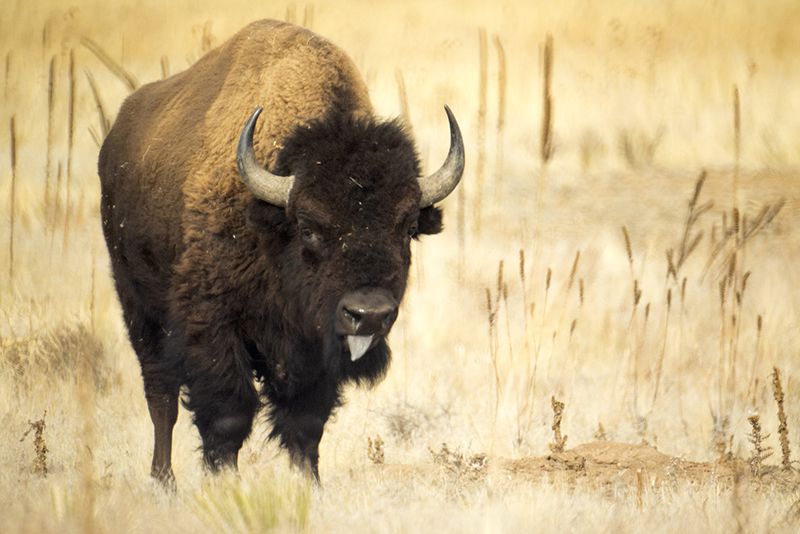
The Ice Age bison’s last moments were a testament to the harsh realities of its time. As ice expanded, resources dwindled, and the bison faced the ultimate challenge of survival.
This poignant end reflects the broader extinction events that marked the close of the Pleistocene. While the bison’s physical form was preserved, its story ended in a landscape transformed by climate change.
This narrative echoes the fragility of life and the tenacity required to endure shifting environments.
12. A Scientific Treasure Trove

The Ice Age bison is considered a scientific treasure trove, offering educational opportunities for both researchers and the public.
Museums around the world are keen to showcase this extraordinary find, emphasizing its importance. Exhibits featuring the bison allow visitors to connect with history in a tangible way.
This access to ancient life inspires curiosity and learning about the natural world. The bison’s presence in museums ensures that its legacy continues, educating future generations about our planet’s rich past.
13. Echoes Of An Era
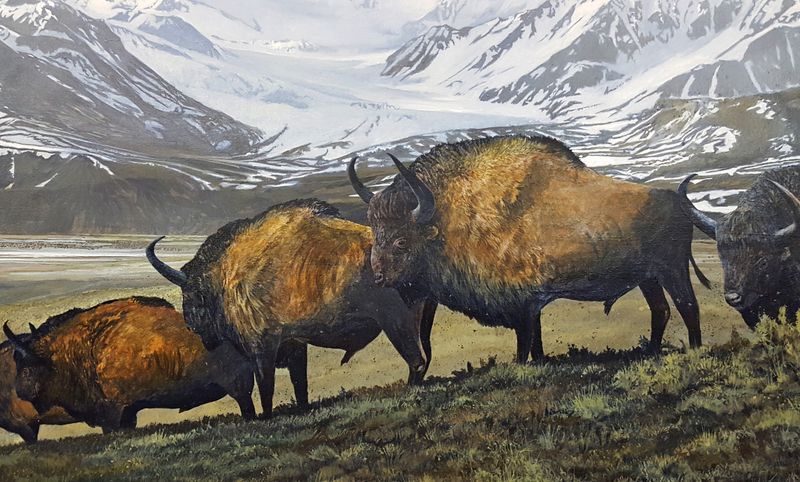
The Ice Age bison is a living echo of an era that shaped the natural world. Its presence reminds us of a time when mammoths and saber-toothed cats roamed the tundra.
These bison herds were integral to the ecosystems of the Ice Age, supporting both predators and early humans.
As a symbol of resilience, the bison’s story connects us to a distant past, offering lessons on survival and adaptation. This echo of an era continues to resonate, inspiring awe and wonder at the Earth’s history.

